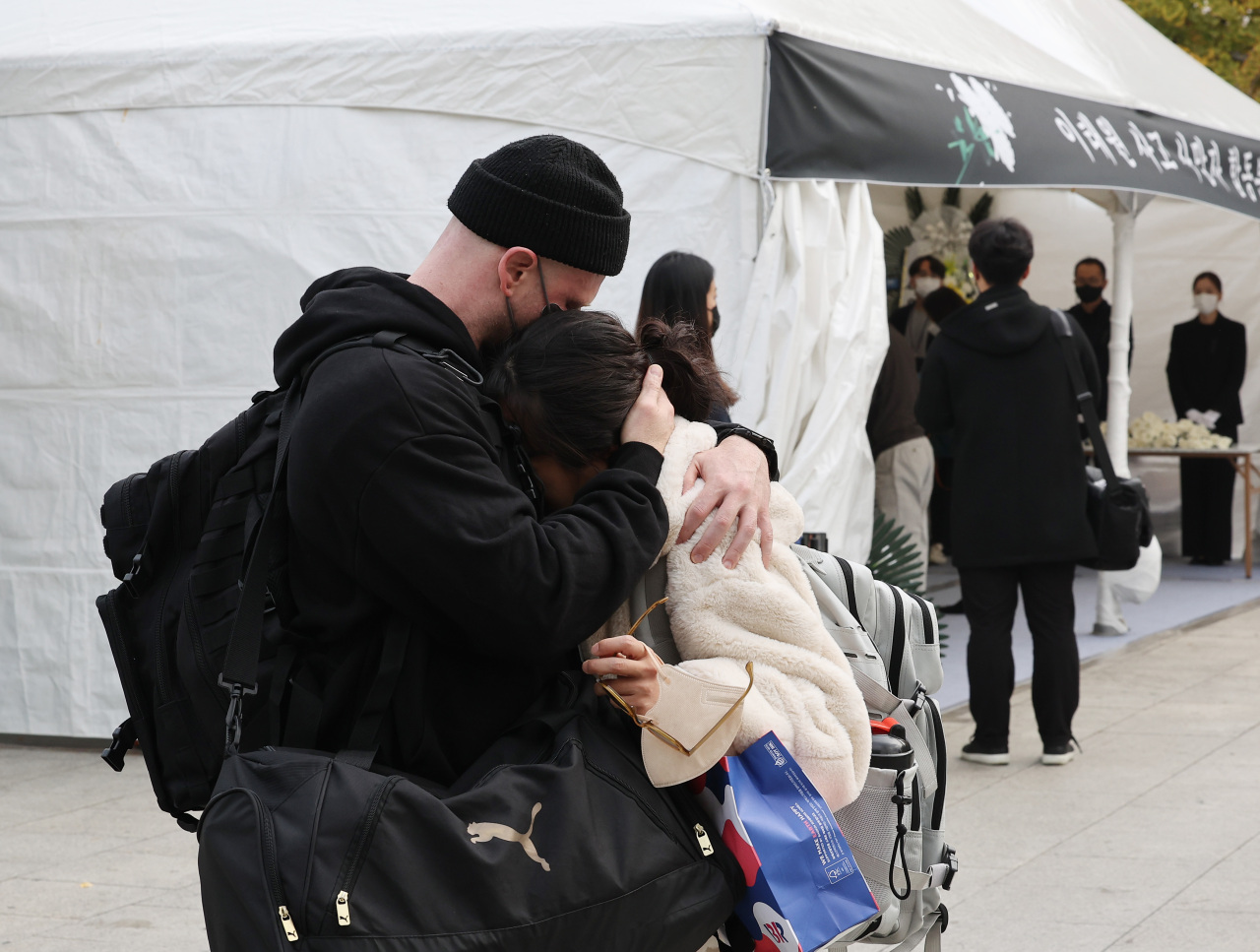 |
People visiting a mourning altar at Noksapyeong Station, close to where the tragedy happened, embrace each other on Tuesday. (Yonhap) |
Many in their 20s and 30s -- the age group with the largest number of casualties -- are gripped by the feeling that they could have been in that situation. As of Tuesday morning, there were 156 casualties.
“I was going to go a party in Itaewon that night. I didn’t go because of other last-minute plans, but that could have happened to me,” said Chung Da-yoon, who is in her late 20s. She went clubbing in Itaewon often before the pandemic, she added.
“On the other hand, I feel guilty for thinking I was fortunate not to be there on that night,” she said. “I could not sleep after watching the news clips, thinking about what happened to those poor people.”
Some are even saying they feel life is meaningless, as a large number of people lost their lives in such an unexpected incident.
“This is so heartbreaking. The tragedy happened in Itaewon, where I often hang out with my friends,” said Kim Sang-jin, who is in his early 30s.
“I don’t even know anyone who was a victim of the tragedy. But still, this feels so close. I continue to imagine what if it was me, what I would do in a situation like that.”
“Watching the news about the people who lost their lives in the tragedy, everything feels so meaningless. I feel as if there might not be a tomorrow. Life and death are not so far apart,” Kim said.
The tragedy, which occurred in a narrow space where a large number of people were tightly packed, has alarmed the public and highlighted safety concerns.
“When I first moved to Seoul, I was so taken aback by how crowded the subways are,” said a woman in her late 20s who wished to be identified by her surname Lee.
Lee goes to work on the busy subway line No. 2, known colloquially as “jiokcheol,” a word that combines “jiok (hell)" and “jihacheol (subway),” and refers to hellish rush hours on public transportation. On weekday mornings, one can easily see people trying to take the already-packed subway car, pushing each other to make more space.
“I remember being surprised at how people were so indifferent at the crowdedness. But now, after years of living here, I am one of them as well. The jam almost feels natural,” she said.
Lee mentioned the Sindorim Station meme, referring to the station where line Nos. 1 and 2 intersect. The station one of the most notorious subway stops in Seoul for its heavy crowds, and is often referred to as an “automatic transfer station” as passengers are shoved on and off the subway car and sometimes even pushed to transfer to another line regardless of if they intend to.
“Living in Seoul, we are so used to being crammed against each other. If I was there, I would not have been alarmed by the crowd, thinking, ‘This is what Halloween in Itaewon is about.’ No one there could have seen this coming,” she said.
By Im Eun-byel (silverstar@heraldcorp.com)



![[Herald Interview] 'Trump will use tariffs as first line of defense for American manufacturing'](http://res.heraldm.com/phpwas/restmb_idxmake.php?idx=644&simg=/content/image/2024/11/26/20241126050017_0.jpg)


![[Health and care] Getting cancer young: Why cancer isn’t just an older person’s battle](http://res.heraldm.com/phpwas/restmb_idxmake.php?idx=644&simg=/content/image/2024/11/26/20241126050043_0.jpg)
